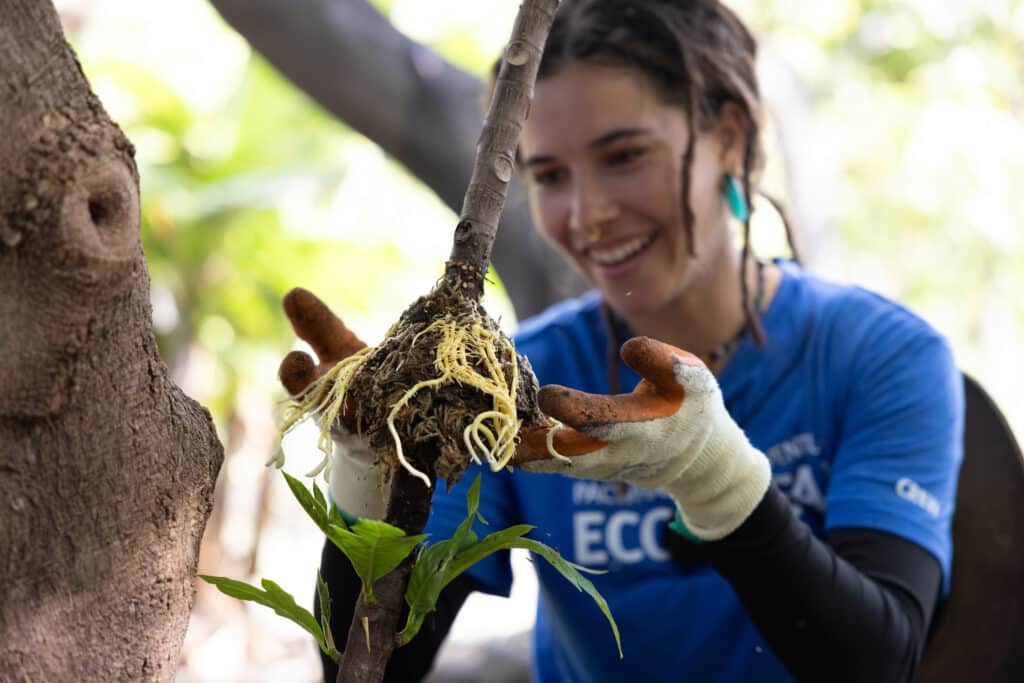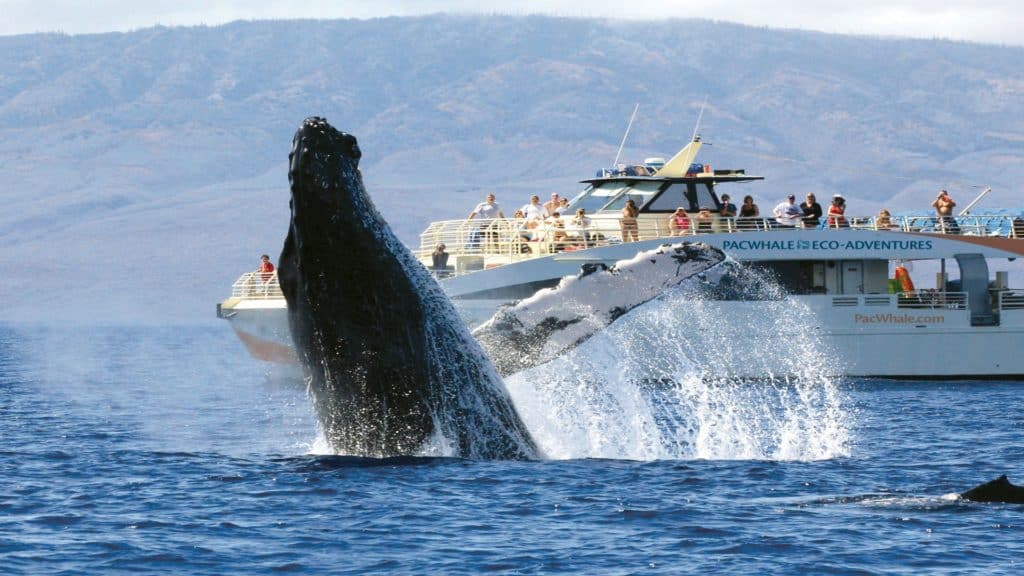Written by Conservation Coordinator Shelby Serra
The previous installment of our series on fisheries interactions touched on the commercial fishing industry’s interactions with whales and dolphins, examining the many factors that play a role in the bycatch of cetaceans in fishing gear including gear type and status (active or abandoned), fishing effort (active or passive) and how animal behavior can even play a role. Because of the varied nature of the industry, bycatch mitigation efforts also vary greatly, sometimes even from fishery to fishery. In this installment we will take a high-level view at some of those mitigation efforts happening at the global, national and local level.
GLOBAL
The Global Ghost Gear Initiative (GGGI) focuses specifically on the problem of lost and abandoned fishing gear worldwide. But it is not only derelict fishing gear that poses a threat to whales and dolphins; active fishing gear also presents a risk to the lives of marine mammals and should be taken into consideration.
The International Whaling Commission (IWC) is the global body charged with the conservation of whales and the management of whaling. Due to the impacts that commercial fishing can have on whales, the IWC recognizes bycatch as a serious threat to whales, dolphins and porpoises (collectively cetaceans). Citing an estimated 300,000 cetaceans caught in this manner every year, they state that bycatch is by far the single most significant, direct threat to cetaceans1.
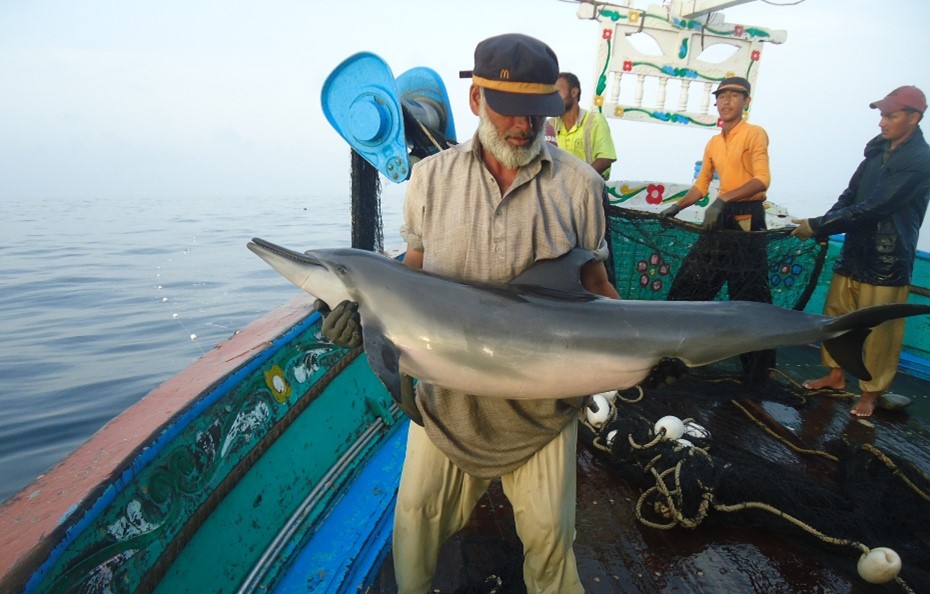
As the leading global body addressing cetacean science, conservation and management, the IWC can play a substantial role in global efforts to address bycatch. To this end, the IWC endorsed a new Bycatch Mitigation Initiative (BMI) in 2016, in collaboration with other organizations, national governments and fishing communities. The aim of the BMI is to develop, implement, assess and promote effective bycatch preventions and mitigation efforts worldwide1. As bycatch mitigation is a very tricky stressor to tackle, the IWC has identified four interrelated areas of work to be addressed: improved assessment of bycatch to measure mitigation success; innovation and testing of mitigation methods; transfer of expertise and management measures between countries; and engagement with other relevant organizations focused on this issue1.
The IWC created a work plan for the BMI for 2018-20 and a 10-year strategic plan for 2018-2028 that outlines major actions the Commission will take toward its goals. According to the strategic plan, the BMI will set up pilot projects in locations and fisheries where the potential for experimental approaches is considered feasible (e.g., where collaborations can be built, supporting conditions are met, transferability to other situations is possible and there is a chance of successfully tackling the issue). According to the World Bank, more than 90% of the world’s 120 million fishers work in small-scale, artisanal fisheries. Based on these figures, the IWC believes tackling cetacean bycatch in this sector should be priority due to the overlap with coastal cetacean populations and the magnitude of distribution of this fishing sector1. Through the information gathered from these efforts, the IWC will be able to scale-up to tackle the commercial level with its acquired expertise.
NATIONAL
Of course, we cannot discuss bycatch mitigation without addressing the high consumer demand for seafood. Due to the incredible appetite for seafood across the globe, there is a crucial need to create an industry that is both economically viable for the people it employs and sustainable for the health of the ocean. In 2013, seafood provided more than 3 billion people with at least 20% of their animal protein intake4, making fisheries and aquaculture vital contributors to food security as a direct source of protein, but also indirectly via employment income for food purchases5.
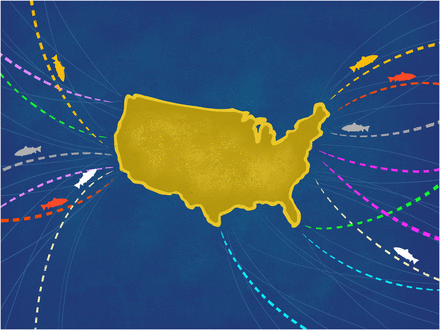
In addition to the amount of seafood eaten, there is also extensive trade in seafood commodities world-wide. The globalization of seafood makes it possible for people to find seafood from almost anywhere, in almost any developed country, with the United States as the largest seafood importer valued at $21.6 billion5,4. The U.S. also ranks high on global exports, ranking fifth in the world4. However, at present, this global trading is not without consequence to cetaceans.
The United States fisheries abide by some of the world’s most robust conservation practices, including measures to reduce marine mammal bycatch. However, seafood consumed in this country is primarily imported from international fisheries. To ensure that the nearly 90% of imported seafood consumed in the U.S.3comes from fisheries that aim to mitigate the bycatch of whales and dolphins, the National Oceanic and Atmospheric Administration (NOAA) has established international marine mammal bycatch criteria for U.S. imports3.
The Import Provisions implement those aspects of the Marine Mammal Protection Act (MMPA) that require the US to ban imports of commercial fish caught by fisheries that result in bycatch of marine mammals. NOAA Fisheries recently compiled a List of Foreign Fisheries (LOFF) that classifies foreign fisheries as “export” or “exempt” based on the frequency and likelihood of incidental mortality and serious injury to marine mammals3. The LOFF is the first comprehensive list of its kind, with 2,800 foreign commercial fishing operations, within 131 nations, that export fish and fish products3. By March 1, 2022, a harvesting nation must demonstrate they have a regulatory program for reducing marine mammal bycatch that is comparable in effectiveness to US standards3.
LOCAL
While United States international efforts are taking form, the domestic efforts to mitigate the impacts of marine mammal bycatch have been instrumental in reducing the “take” of whales and dolphins. NOAA Fisheries has developed the formation of nine Take Reduction Teams, seven of which are currently active3. The purpose of each team is to formulate take-reduction plans that help recover and prevent the depletion of “strategic” marine mammal stocks interacting with fisheries in U.S. waters. NOAA defines a “strategic stock” as one which is either listed as endangered or threatened under the Endangered Species Act (ESA), declining, or likely to be listed as threatened, listed as depleted under the MMPA, or is experiencing direct human-caused mortality that exceeds the stock’s allotted take.
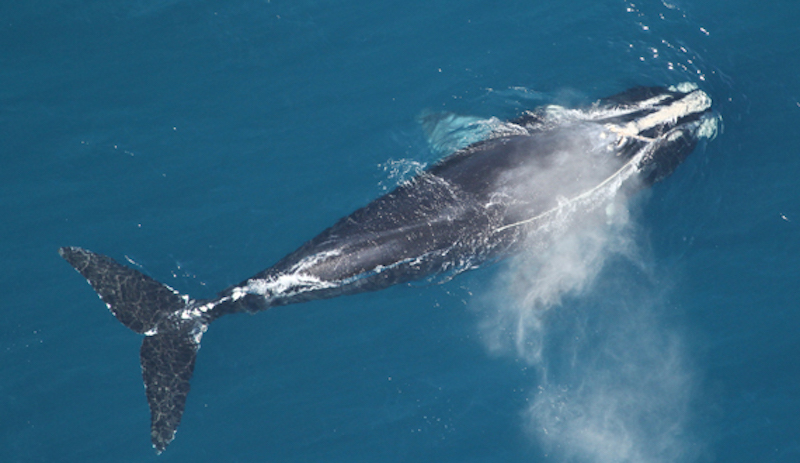
The oldest active take-reduction team is the Atlantic Large Whale Take Reduction Team, whose goal is to reduce the level of serious injury and mortality of three strategic stocks of large whales — the North Atlantic right whale, humpback whale and fin whale — from commercial gillnet and trap/pot fisheries. This team is particularly important today since the International Union for Conservation of Nature (IUCN) recently changed the North Atlantic right whale’s status from endangered to critically endangered, with fewer than 250 mature individuals alive at the end of 2018. As these animals are on the brink of extinction, the urgency for action to protect these animals has been multiplied. The team is comprised of fishermen, scientists, conservationists, and state and federal officials from Maine to Florida. The Atlantic Large Whale Take Reduction Plan includes requiring the use of weak links and sinking groundline, gear marking, seasonal area closures and a minimum number of traps per trawl3. These efforts could not be implemented without a multi-stakeholder approach to the mitigation of this threat.
A more newly formed take-reduction team is the False Killer Whale Take Reduction Team, established in January of 2010 to address the incidental mortality and serious injury of false killer whales (FKW) in Hawaii-based deep-set and shallow-set longline fisheries3. The false killer whale is a species of dolphin that inhabits the tropical and semitropical regions of the world’s ocean3.
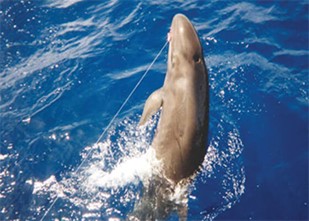
Due to the FKW’s propensity to depredate (take fish and bait from fishing lines), these animals are particularly prone to hooking and/or entanglement3. The distinct population segment (DPS) that utilizes the main Hawaiian Islands as its habitat has in recent decades declined to endangered status, likely due to fisheries interactions with the Hawai’i longline fisheries. This stock is the only FKW population protected under the ESA.
Due the presence of this endangered population in Hawaiian waters, the species became a priority for Pacific Whale Foundation (PWF) Research Program. It is the mission of PWF Research to identify and assess the major stressors, or threats, to whales and dolphins and develop science-based solutions to mitigate these problems. The work conducted throughout the Pacific Ocean, including the waters surrounding Maui County, supports conservation and management outcomes that specifically target this endangered population, as well as others, in the region.
In addition to PWF’s research into humpback whale and dolphin entanglement rates, which we discuss in our next installment, we are also a member of NOAA’s Large Whale Entanglement Response Network, which responds to whales caught in fishing gear in the waters of Maui Nui and attempts to free them. Learn more about these and other PWF efforts that contribute to the global mitigation of this major threat faced by the ocean’s whales and dolphins in our final installment of this series.
For past installments of Pacific Whale Foundation’s Making Waves series. Sign up to receive notifications when new articles and blogs are published.
Read More: Fisheries Interactions Part 3
Sources/References
- Bycatch Mitigation Initiative Strategic Plan 2018-2028. IWC/67/CC/01
- NOAA Fisheries
- FAO (Food and Agriculture Organization of the United Nations). 2016b. The State of World Fisheries and Aquaculture 2016. Contributing to food security and nutrition for all. FAO, Rome. 200 pp.
- Guillen, J., Natale, F., Carvalho, N. et al. Global seafood consumption footprint. Ambio 48, 111–122 (2019). https://doi.org/10.1007/s13280-018-1060-9
Image Sources
- https://iwc.int/bycatch Crew-based observer in Pakistan monitors cetacean bycatch. Image: WWF Pakistan
- https://www.pnas.org/content/116/19/9142.full A better accounting of the globalized seafood supply chain will help support the US seafood industry, achieve sustainable production, and meet consumer demand. Image credit: Allison Horst (University of California, Santa Barbara, CA).
- https://www.fisheries.noaa.gov/new-england-mid-atlantic/marine-mammal-protection/atlantic-large-whale-take-reduction-plan Right whale mother and calf, sighted June 8, 2014, during survey.
